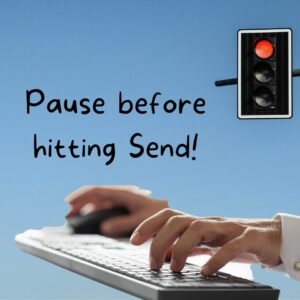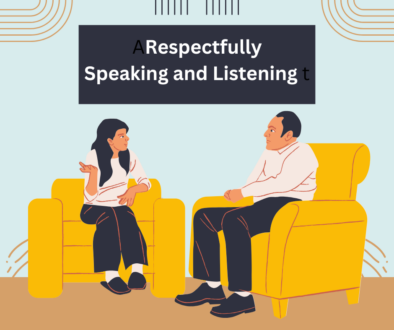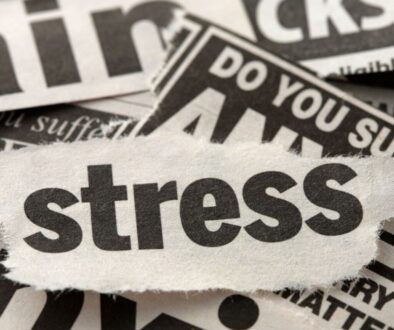How to Avoid Conflict in Email Communication

Have you ever been involved in an email message bushfire? It starts with one person feeling hurt, dismissed or angry about an email communication. The recipient then reacts with a one up slamming or defensive message. Electronic communication is ripe for communication easily and quickly going sideways. Just look at Susan and Mary’s interchange:
Example of Email Communication Gone Wrong
Susan sends an email to her working group grumbling about Mary. “I am deeply offended by Mary’s allegation that I mismanaged our organization’s funds. I suggest Mary be more concerned about coming to our meetings on time and only speaking up when she has something constructive to say.”
The team and Mary receive Susan’s message. Mary types her response and hits “Reply all” with something like, “Who does Susan think she is? She is the pain in the butt at our meetings.” And then the feud escalates.
The Problem with Emotional Laden Emails
Emotions and conflict should be left out of email communication. Email with blaming, accusing, angry messages or undertones are often copied to one or numerous individuals. Sometimes the offensive email communication arrives in the mailboxes of people who have little or no connection to the players or the organization. The miscommunication, dysfunction, and tension becomes out of control.
Those people with high resilience deal effectively with conflict and avoid dealing with it over email . . . and heaven forbid, Facebook and other Social Media platforms. Clicking SEND is often an automatic reaction akin to the blurting of a raving, overtired, and disoriented extrovert (speaking for myself here!).
When communicating in emails or online, we need to slow down and consider our intent and messaging.
7 reasons to slow down
- Words, alone, on the computer screen, convey only a portion of our message.
- Electronic communication lasts a long, often endless, time. Do not rashly risk ruining your stellar reputation.
- When we talk on the phone we can literally hear the other person’s tone, pace and volume of speech.
- When we connect in person we add the advantage of visual cues such as people’s facial expressions and body language such as head nodding or shaking.
- Face to face, we can notice, hear, feel, respond and comment on several different levels as in, “You are saying yes while I see your head shaking no.”
- A quick SEND can further damage a relationship that might otherwise have deepened from a rational discussion.
- Over email it is next to impossible to conclude a difficult interaction with a mutual agreement or handshake, let alone a fond hug.
8 ways to better communicate
- Avoid using email and social media for dealing with relationship issues such as conflict, hurt feelings or problems. It is unwise, indeed probably cruel, to fire someone, break-up with someone, or express criticism, disappointment or frustration in an email, on the internet, or on social media.
- Use email primarily for communicating information including facts, data, research, meeting minutes, reports, directions, and guidelines.
- Follow the old adage, Criticize privately; celebrate publicly. Express appreciation and acknowledge success on social media.
- When you sense conflict, a misunderstanding, or feelings of anger, fear or hurt, pick up the phone or meet in person.
- Avoid joining group email slams. Some organizations have a policy that any personal or group conflict is to be dealt with during face to face meeting.
- If ever you receive an email with conflicted content, either delete it and don’t get involved or, if you are a main player, pick up the phone and arrange to meet with the other party or parties.
- Get in the habit of noticing how people’s vocal, hand, and physical expressions often speak louder than their words.
- Learn to use some basic conflict resolution and listening skills.
If we are going to risk lighting a match, we need to be present to insure it does not start a forest fire. As Voltaire said “The road to the heart is the ear.” Our eyes add understanding. When relationships count, give it your communication all. Avoid email communication wildfires!
When have emails or social media posts gone wrong for you?
You might be interested in Special Report #5: How to Communicate to Be Heard.
Please check out these related posts:
- Preparation and 12 Lines to Resolve Conflict
- Easy and Powerful Steps to Improve Your Listening Skills




